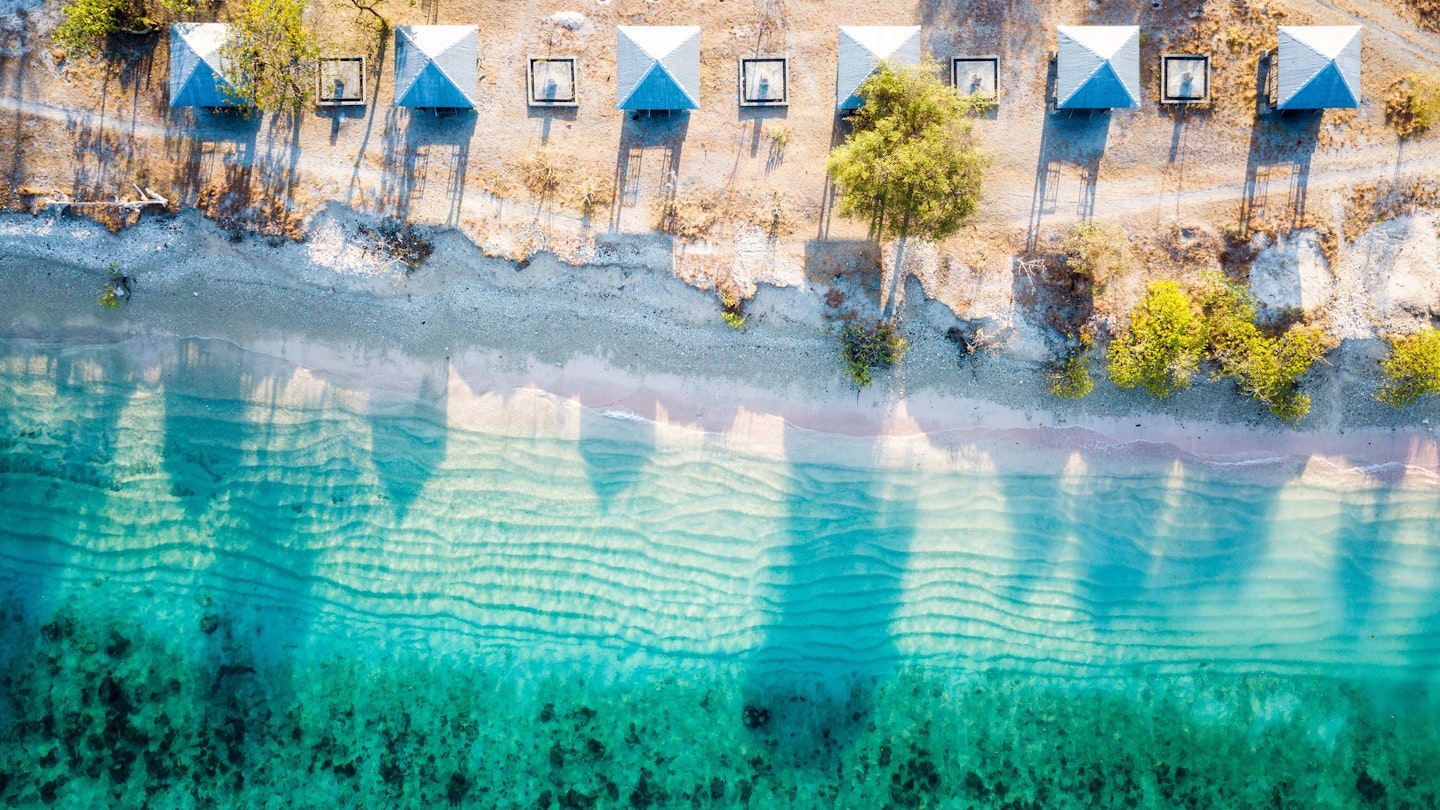Discover the Enchantment of East Nusa Tenggara, Indonesia
From the pink-sand beaches and world-class diving of Komodo to the animist traditions of the villages dispersed throughout West Timor, East Nusa Tenggara’s islands are as diverse as they are enchanting. In this relatively untouched part of Indonesia, it’s still possible to have a coastline all to yourself, eat with locals at night markets, and buy some of the most beautiful ikat (dyed, patterned textiles) at weekly trade markets, direct from the women who made it.
For travelers yearning for an Indonesian holiday away from the crowds, with a hefty dose of culture and a genuine sense of adventure, this is your destination.
Dive into Technicolor Reefs
Whether you’re well acquainted with creatures of the deep or it’s your first time open water diving, East Nusa Tenggara’s vibrant underwater worlds are not to be missed. Labuan Bajo is the jumping-off point for the famed Komodo National Park, but there are plenty of opportunities to encounter giant manta rays, turtles, sharks, and thousands of species of tropical fish along the way.
- Prices are competitive in Bajo center, with popular options including:
- Three-dive day trips
- Three-day Open Water Diver certifications
Liveaboards are the choice for die-hard divers, especially when diving is at its best between April and September. The Alor Archipelago is a lesser-known dive destination, ideal for diving enthusiasts, with over 42 dive sites. Along with its white-sand beaches and volcanic terrain, Alor is celebrated for uncrowded crystal waters and unspoiled coral reefs. Shark and dolphin sightings are common, making November a prime time to catch migrating sperm whales.
Wildlife of East Nusa Tenggara
Specific to the area, Komodo dragons can grow up to 3m in length and weigh up to 150kg. They are most active during dawn and dusk, which is worth noting when choosing a tour. Although there isn’t a widely accepted explanation for their exclusive presence in this tiny part of Indonesia, their ancestors are believed to have arrived from Australia four million years ago. Current estimates put their wild population at approximately 5000, with a limited number of egg-laying females.
In July 2019, local authorities briefly considered closing Komodo Island to tourists to help revive the dragon population. They later reversed that decision, instead implementing an annual membership program to support infrastructure improvements, though non-premium members can visit other spots, including Rinca Island, where dragon sightings are reportedly better.
Experience East Nusa Tenggara’s Villages
Each village in East Nusa Tenggara boasts unique customs, beliefs, traditions, adat (traditional law), and, in some cases, different perceptions of time. In Boti, a village in West Timor, the charismatic kepala suku (chief) oversees the community’s nine-day week. Residents live off the land, eschewing government assistance and maintaining traditions since the day Dutch colonists and headhunters failed to find them, preserving their way of life for 21 generations. Spending a night in modest accommodation while interacting with the 77 families here will be a highlight of your Indonesian travels.
Arrange your stay through a guide who can act as a translator and advise on suitable gifts to bring alongside the nightly fee. Willy Kadati, based in West Timor, is a fantastic guide with incredible cultural, botanic, and ikat knowledge, charging 600,000Rp per day for motorbike travel.
Temkessi, another preserved village in West Timor, is accessible through a keyhole between two limestone cliffs. The locals here believe their ancestors commanded the sea and can control weather. A guide is essential, along with the customary offering of betel nut before photography. The island of Sumba also boasts impressive villages, notably Ratenggaro, set on a grassy bluff with breathtaking views of the sea.
During your village visits, remember to observe local etiquette: bring betel nut as an offering, remove your shoes at any doors, be patient (as Indonesia follows its own clock), and remember that a smile goes a long way. When a payment is required to visit or stay at a village, you’ll be asked to sign a guestbook, so please do so and leave payment within.
Hike Volcanic Peaks
While Labuan Bajo is gaining popularity, the rest of Flores remains a hidden gem, featuring stunning hikes through dense jungles and up volcanic peaks. One of the island’s main attractions is the sacred, extinct volcano called Kelimutu, which is topped by three volcanic lakes known as the tri-coloured lakes. Moni, a village filled with homestays and reggae-loving locals, is the ideal base before making the climb.
- Wae Rebo, a traditional village of Manggarai, rewards hikers with picturesque views after a challenging 9km trek.
- Gunung Inerie, towering at 2245m, typically requires an eight-hour round trip, with a start time of 3am for the stunning sunrise view.
Surf the Best of Sumba and Rote Islands
Sumba and Rote Islands are known as surfing hotspots. Surfers throughout Sumba set up at small homestays and surf camps along the coast, taking daily trips to catch the best waves. Those eager to stay near premium surf should consider accommodations like Sumba Adventure Resort, Marthen’s Homestay, Rua Beach Resort, or Sumba Surf Camp.
Rote Island, located just southwest of West Timor, boasts postcard beaches and some of the world’s best surf. Surfers can find accommodations at Pantai Nemberala during peak season from June to September, with the beach known for its legendary left, T-Land.
High-quality board rentals are available from about 100,000Rp per day, which can be advantageous given that weather conditions can affect small flights from Kupang and Bali.





